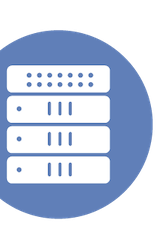|
|
This video is part of the appearance, “cPacket Presents at Security Field Day 13“. It was recorded as part of Security Field Day 13 at 9:00-10:30 on May 29, 2025.
Watch on YouTube
Watch on Vimeo
cPacket enables continuous security validation and compliance auditing with deep packet inspection, TLS certificate verification, and external domain access analysis. Its AI-enhanced observability platform ensures regulatory readiness, detects misconfigurations, and identifies policy drift across hybrid cloud and enterprise networks—helping security teams maintain an up-to-date posture and pass audits with real-time, actionable insights. cPacket’s solution focuses on ensuring that security postures don’t deteriorate over time due to new threats, outdated rules, misconfigurations, or broken integrations, which can lead to compliance breakdowns, especially in regulated industries like financial services and healthcare. They achieve this through Deep Packet Inspection (DPI) in their C-Store, which breaks down protocols like HTTPS, DNS, and LDAP to extract relevant metadata and performance data. This DPI capability, distinct from simple string matching, allows cPacket to understand protocol details and extract information crucial for security.
One key application of this capability is ensuring server compliance. cPacket’s dashboard provides real-time visibility into factors like TLS certificate status, cipher suite usage (e.g., ensuring adherence to TLS 1.2/1.3 and detecting insecure cipher suites), and the presence of expired certificates. This detailed monitoring helps organizations proactively identify and address compliance issues before they lead to regulatory scrutiny. Another powerful feature is DNS monitoring, which uses AI-enhanced agents to identify “unknown domains” by comparing accessed domains against known CSPs, CDNs, and top legitimate sites. This helps detect potentially malicious domains generated by Domain Generation Algorithms (DGAs) that might indicate a compromise.
cPacket is also developing AI-driven agents that can query their observability data using natural language, making it easier for security experts to analyze complex network activity without needing to master query languages. These agents are designed with controls to prevent improper operations, ensuring data integrity and security. While still in the lab and not yet in production, this capability holds significant promise for intuitive data exploration. Furthermore, cPacket’s platform allows for the analysis of external PCAP files, enabling security teams to leverage cPacket’s robust analytics tools on data captured by other systems, though a direct UI upload option is not yet readily available. Overall, cPacket aims to augment security postures by providing pervasive, real-time network observability that informs validation, ensures compliance, and aids in rapid incident response.
Personnel: Andy Barnes, Ron Nevo









